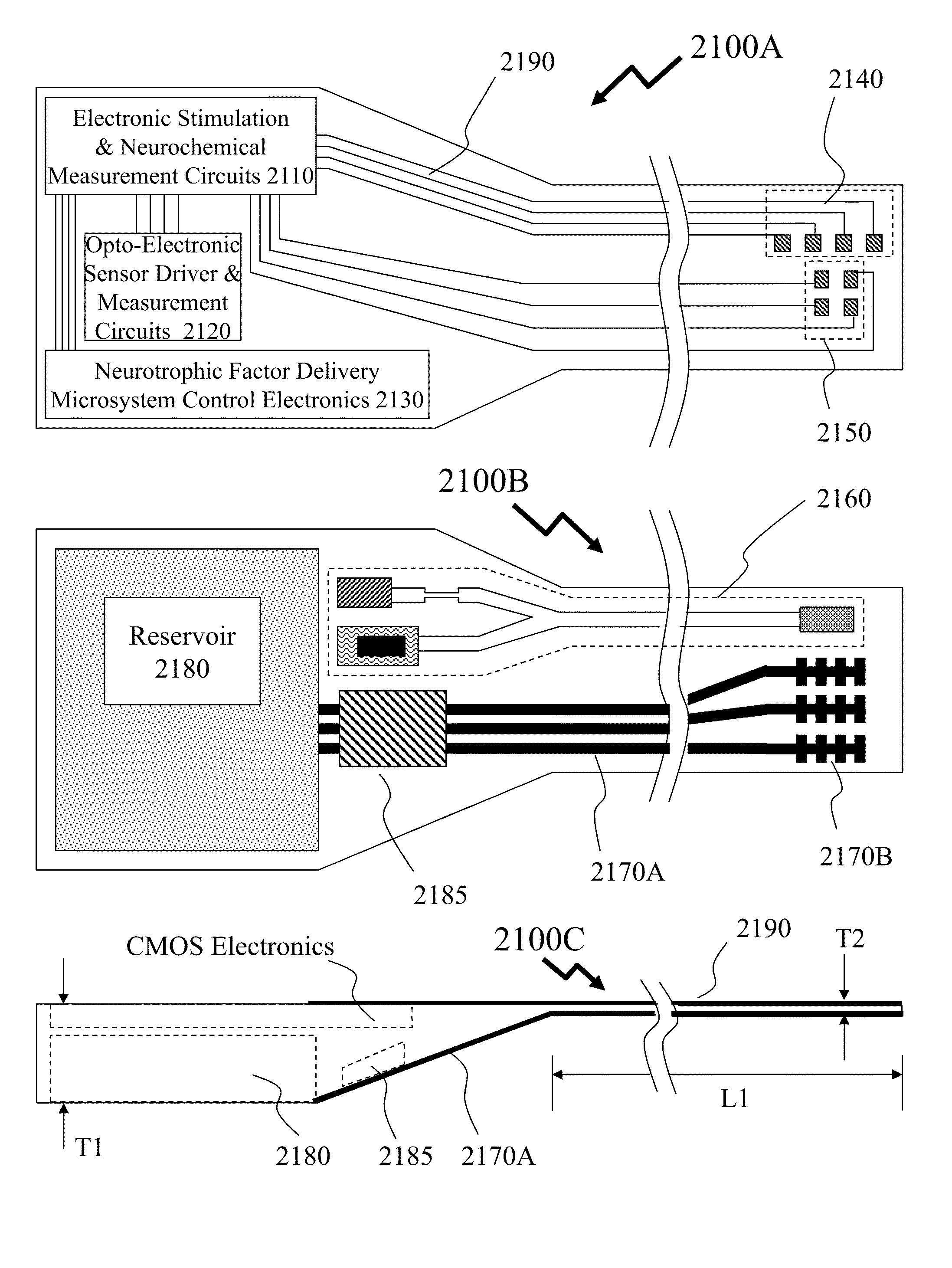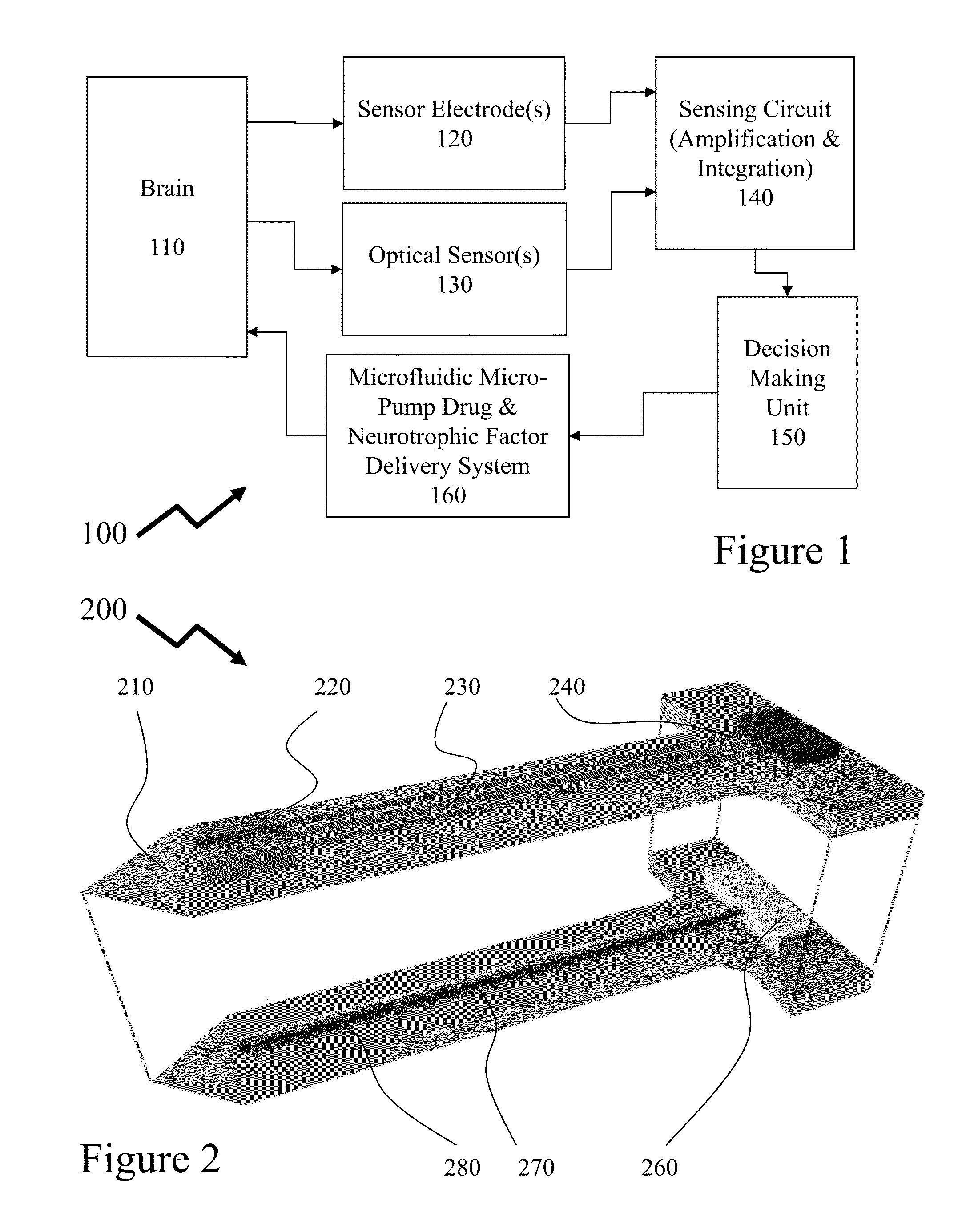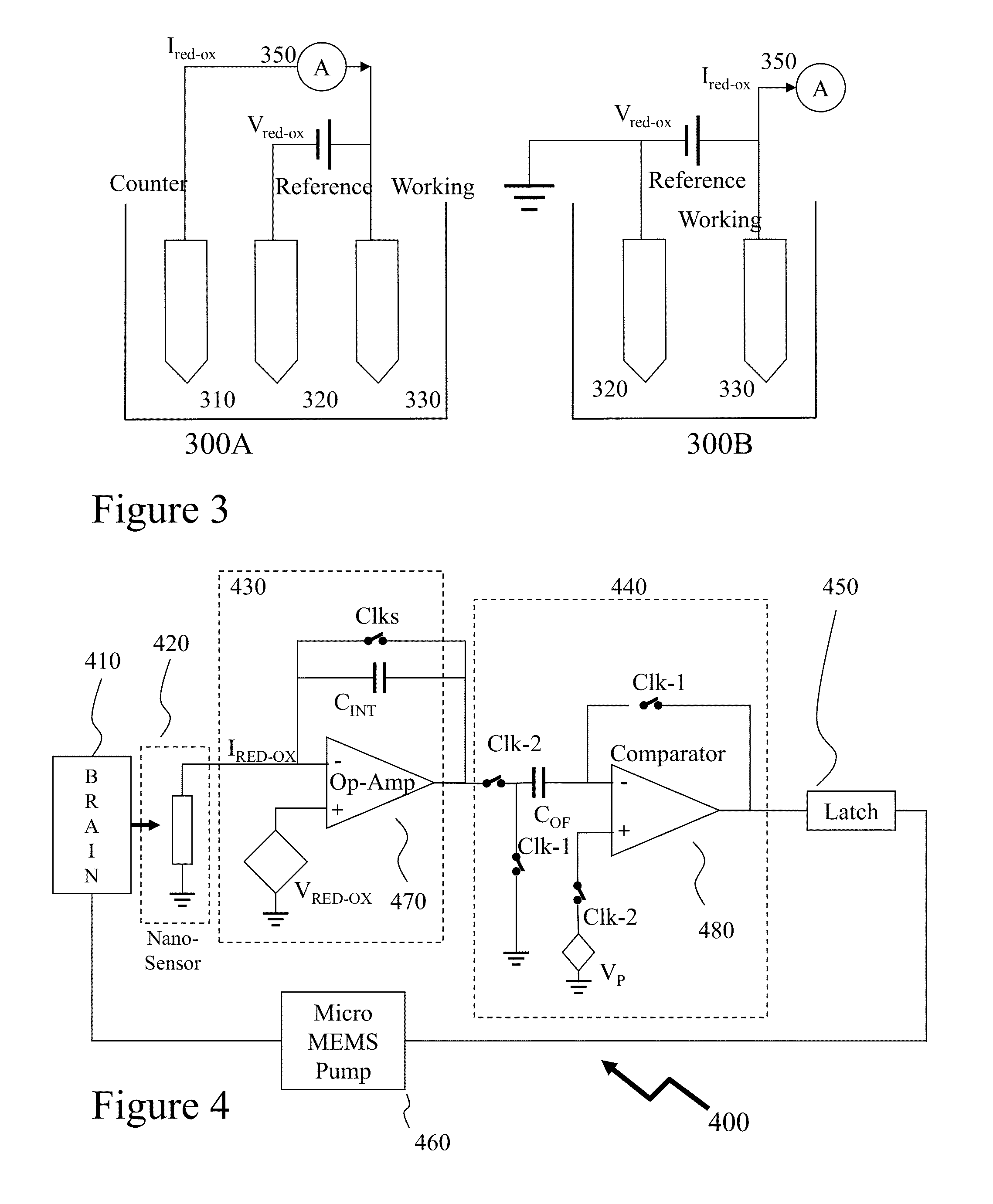Methods and Systems for Closed Loop Neurotrophic Delivery Microsystems
a neurotrophic factor and microsystem technology, applied in flow monitors, medical science, intravenous devices, etc., can solve the problems of short distance of gdnf diffusion, non-constant release of drugs and insufficient gdnf dosage, and tissue damage,
- Summary
- Abstract
- Description
- Claims
- Application Information
AI Technical Summary
Benefits of technology
Problems solved by technology
Method used
Image
Examples
Embodiment Construction
[0049]The present invention is directed to CMOS implantable electronics and more specifically to neurochemical sensors and neurotrophic factor delivery microsystems.
[0050]The ensuing description provides exemplary embodiment(s) only, and is not intended to limit the scope, applicability or configuration of the disclosure. Rather, the ensuing description of the exemplary embodiment(s) will provide those skilled in the art with an enabling description for implementing an exemplary embodiment. It being understood that various changes may be made in the function and arrangement of elements without departing from the spirit and scope as set forth in the appended claims.
[0051]Parkinson's disease (PD) is a slow and progressive disorder and loss of dopamine producing neurons occurs over a long period of time. This suggests that a therapeutic method that can provide protection for remaining dopaminergic neurons and promote growth and restoration of other dopaminergic neurons would present a ...
PUM
 Login to View More
Login to View More Abstract
Description
Claims
Application Information
 Login to View More
Login to View More - R&D
- Intellectual Property
- Life Sciences
- Materials
- Tech Scout
- Unparalleled Data Quality
- Higher Quality Content
- 60% Fewer Hallucinations
Browse by: Latest US Patents, China's latest patents, Technical Efficacy Thesaurus, Application Domain, Technology Topic, Popular Technical Reports.
© 2025 PatSnap. All rights reserved.Legal|Privacy policy|Modern Slavery Act Transparency Statement|Sitemap|About US| Contact US: help@patsnap.com



